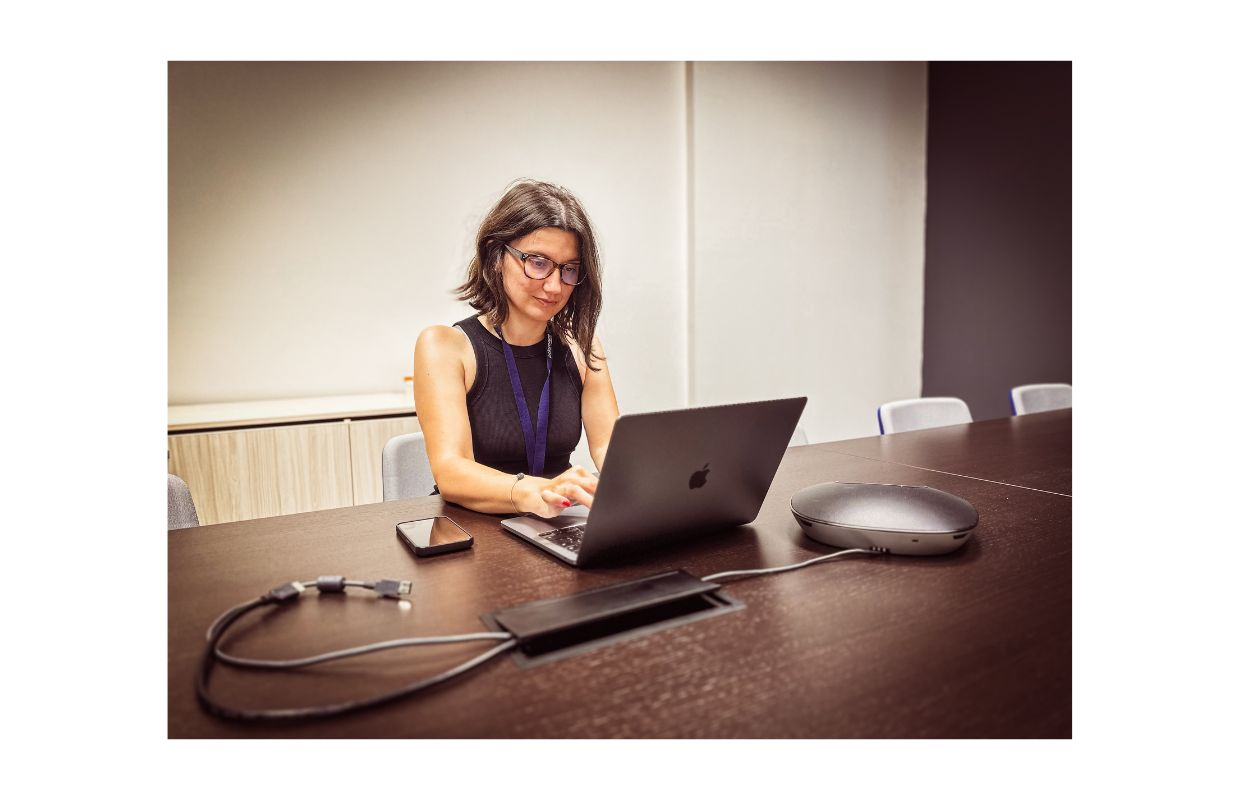At one knowledge exchange session, during an internal FE (Front-End) and UX (User Experience) forum, we had an elaborate discussion about the collaboration between the two domains. We concluded that this collaboration could contribute to building user-friendly and visually attractive web and mobile products.
One of our greatest strengths as an IT consulting company is being able to deliver agile teams of consultants at any time. We invest in both each individual consultant’s knowledge, and in our collective team knowledge and experience. We achieve this by creating dedicated spaces for discussion and collaboration between domains.
To tell us more about the topic of FE and UX collaboration, this week we have Jana Adamovic and Viktor Ristevski – two of our experienced UI/UX Designers!
Benefits of Collaboration between FE and UX
A collaboration between the two domains results in a better user experience. It also increases the efficiency and effectiveness of the development process. Regular communication and sharing an understanding about project goals are essential for this to become a successful collaboration. This would entail having regular meetings and discussions between FE developers and UX designers to share ideas and clarify issues and requirements. It is important to establish tools that will facilitate this communication, such as Slack, Microsoft Teams, or any other project management software.
Communication between FE and UX
It is important for the means of collaboration to be established as early as possible in a project. This especially helps in setting the tone of communications in the beginning, as well as having a mutual understanding of the product requirements. The aspect in which it helps most is providing input about the technical feasibility of the product, and possible design constraints.
Once this has been established, everyone goes on to doing their magic. UX designers provide detailed design specifications to FE developers which include design files (in the Polar Cape case, this would be in Figma). This includes explanations of design elements and a detailed guideline that includes colour schemes, typography, and user interactions.
The Design
Having a responsive design is one of the key aspects of a solid product. Front-end developers make sure that the design is responsive throughout multiple screen sizes and devices. UX designers make sure that the user experience maintains its consistency across different platforms. When a design is implemented into code, a close collaboration between the two domains makes sure all micro-interactions are working as intended.
Feedback
A sound feedback process needs to be established. This way, the product can be regularly tested in its early phases, to avoid issues later. To help visualise the product and collect better feedback, it is recommended that the two domains share access to prototyping tools. This way, they can have an overview of interactive prototypes for the product being developed.
It’s been shown to be a good practice when the two domains collaboratively develop and maintain a design system that contains reusable components, styles, and guidelines. FE developers should work with UX designers to streamline the deployment process and ensure that design changes are consistently reflected in the live application.
Conclusion
While in-depth expertise is not required in each other’s domains, having a baseline understanding promotes better communication. It reduces misunderstandings and creates a collaborative atmosphere. Additionally, it allows team members to appreciate the challenges of the other role, leading to more informed decision-making throughout the design and development process. Knowledge-sharing sessions within the team can be beneficial for achieving this mutual understanding.
Regular communication is essential, and both teams usually communicate daily. However, team preferences, project demands, and any specific challenges that arise during development dictate the frequency and format.
By creating a collaborative and communicative workflow, UX designers and front-end developers can work together more effectively, resulting in a smoother development process and a better user experience for end-users.













